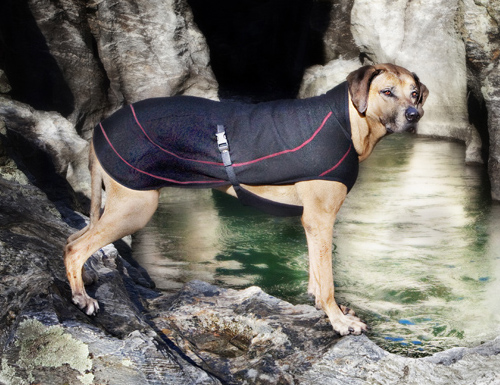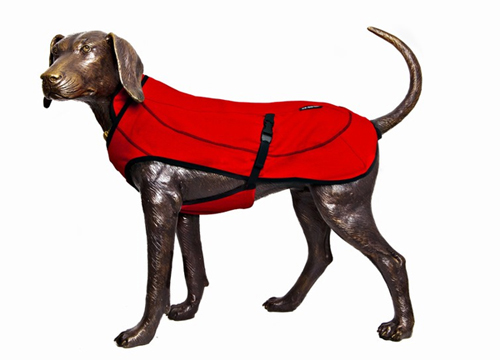When the cold winds howl so does my dog. He is 9 years old, a trim Weimaraner with short fur who has a mean bark but the underlying personality of a big baby. As such, our dog, Rodney, has booties for snow and various other pieces of cold-weather gear, including two jackets. He wears his canine coats outdoors and around the home, the added insulation appreciated in the woods or for curling up on the floor for a winter nap.
Rodney’s most primo piece comes from a New Zealand company called D-Fa. The jacket, the company’s Ice-Barker model, is made of a thick wool fabric. You pull the Ice-Barker over your canine’s head and let it unfurl back toward the tail, the thick wool adding a significant layer of warmth.

The D-Fa jacket fits loose and attaches via plastic buckles. The wool, a fine merino blend, serves as “extra fur” for a chilly dog, though the felted material is not particularly wind- or water-proof.
At $119 and up, depending on size, the Ice-Barker is an investment. Its fancy wool makes it expensive, but the sheep fuzz also adds two characteristics not seen in many dog coats: Wool is warm even when wet, and wool also has natural odor-suppressing qualities, the latter something any dog owner will appreciate after a week of wear.

The Ice-Barker comes in seven sizes and two colors, black and red. It is sold at www.d-fa.com.
My pup’s second coat, the Climate Changer model from Ruff Wear, costs about $60 and is made of synthetic fleece. The stink factor is higher with this model versus the wool coat, requiring more washings. After a week or so of wear the jacket acquires a slight sour stench, though it’s easily eliminated with a launder.









